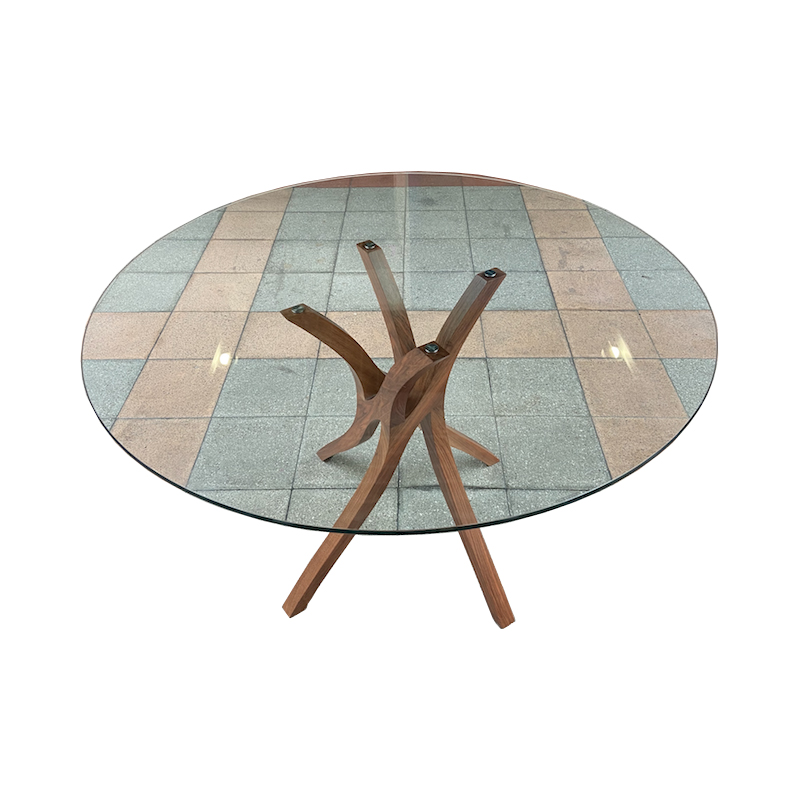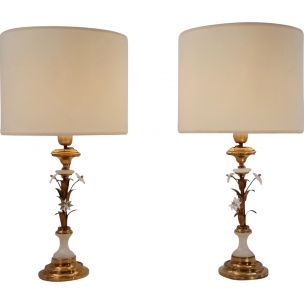Skeptical
Hate to be a doubter, but with these things you have to assume not and hope to be proven otherwise. It's certainly not a standard production base, but it looks like it was made commercially rather than the product of a fabricator or someone in the Eames office mocking up a base. Since it does not have shock mounts, what do the legs and that metal cover attach to? The wide swath of extra adhesive does not look promising.
It's interesting and certainly bears further investigation, but unless you can establish provenance I would not spend a great deal of money on it. That's assuming you are considering buying it and don't already own it. If it's yours, I'd be interested to see what is under that metal cover-plate.
Another clue might be the location. Where did it come from? Did it live most its life in Southern California where the Eames office was, or elsewhere? As we search for vintage Herman Miller a lot in Southwest Michigan (HM country) we come across a fair number of "employee creations". You know that Johnny Cash song about the Cadillac? "One piece at a time"... "It was a '56, '57, '58, '59..." We have seen swag leg chair bases with table tops on them, Nelson case goods with LCW legs.. other strange combinations. Every time someone sees something out of the norm, they want to declare it a prototype, but the reality is often much less glamorous.
Much of the prototype phase of the development of the fiberglass seating was documented by the Eames office, and they still have a lot of that archived. Perhaps you should send these images to them and see what they think.
This chair is interesting, but my gut says it is not a prototype. I'd be curious to hear what additional info you can get about it.
Devil's advocate
Since we've heard the reasons why not, I want to play DA for a minute.
First - there are no shockmount pads. I'm referring not to the hockey puck mounts themselves, but the flattened pads on the underside of a chair which would direct the craftsman where to adhere the mounts.
But, what we do see is the same type of gluing -albeit on a larger scale - as the production mounts. One must assume that there is a large mount hidden underneath the cover - a mount that the 4 screws are sunk into.
The cover itself could either be a con - why would a prototype have a cover so uniquely tailored? or a pro - perhaps the cover is an off-the-shelf part and they made the angles of the X-base around it.
The texture of the chair is clearly early, and despite the quality of the photos it does look like a rope edge.
Conversely - this might be a later prototype - similar to the unusual 1952 metal collars on the underside of the DCMs. Perhaps they were toying with a thicker (but hollow) tube. The very first bases were solid - must have been heavy and a pain to weld. In addition the tube clearly has a slight cupping to it - following the bottom of the shell - something that seems too graceful to be an accident. And the glides appear to be the later boot glides, not the earliest screw ins.
If you look closely...
In the second photo, You can kind of make out raised circular regions where the rear shock mounts would go.
The glides do appear to be boot glides, but the rubber sleeves look longer / taller. They would also presumably be larger diameter since the rods are thicker.
This is not my listing, just one that I came across. The item is located in California.
If you need any help, please contact us at – info@designaddict.com









